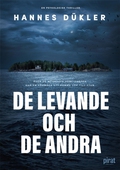
Lägg till önskelistan
RHNS Averof e-bok
Pris
115 kr
Built at Livorno in 1910, the 10,000-ton RHNS Averof had the distinction of being the flagship, and by far the biggest warship, of the Royal Hellenic Navy until 1951. More than a century after its construction, she is still afloat, one of just three armoured cruisers still in existence in the world. Originally intended for the Italian navy, the ship was bought by Greece and soon saw her first action in the Balkan Wars. In the Battle of Cape Helles (3 Dec 1912) Averof inflicted heavy casualtie...
E-Bok
115 kr
Pris
Förlag
Pen and Sword
Utgiven
18 Februari 2021
Längd
171 sidor
Genrer
Historia & Arkeologi, Samhälle Och Politik, Fackböcker
Språk
English
Format
epub
Kopieringsskydd
Vattenmärkt
ISBN
9781473838215
Built at Livorno in 1910, the 10,000-ton RHNS Averof had the distinction of being the flagship, and by far the biggest warship, of the Royal Hellenic Navy until 1951. More than a century after its construction, she is still afloat, one of just three armoured cruisers still in existence in the world. Originally intended for the Italian navy, the ship was bought by Greece and soon saw her first action in the Balkan Wars. In the Battle of Cape Helles (3 Dec 1912) Averof inflicted heavy casualties on the Turkish fleet, following it up with a victory in the Battle of Lemnos (5 Jan 1913).
In the 1920s the ship underwent a major refit in France, which included modernizing her armament by replacing her obsolete torpedo tubes with more anti-aircraft guns. When the Germans overran Greece in World War Two, Averof made a dramatic escape to Alexandria, dodging attacks by the Luftwaffe, despite Admiralty orders that she be scuttled. In 1941 she escorted a convoy to India, being the first Greek vessel to enter Indian waters since the time of Alexander the Great, and continued to serve on escort duties throughout the war.
In 1945 Averof was laid up on the island of Poros and neglected until 1984 when the Greek Admiralty decided to resurrect the ship. After years of slow refitting and preservation, the ship is now moored at Phaleron on the coast of Athens as a floating naval museum. As well as giving full technical specifications and operational history, including details of her restoration, John Carr draws on first-hand accounts of the officers and men to relate the long and remarkable career of this fine ship.









